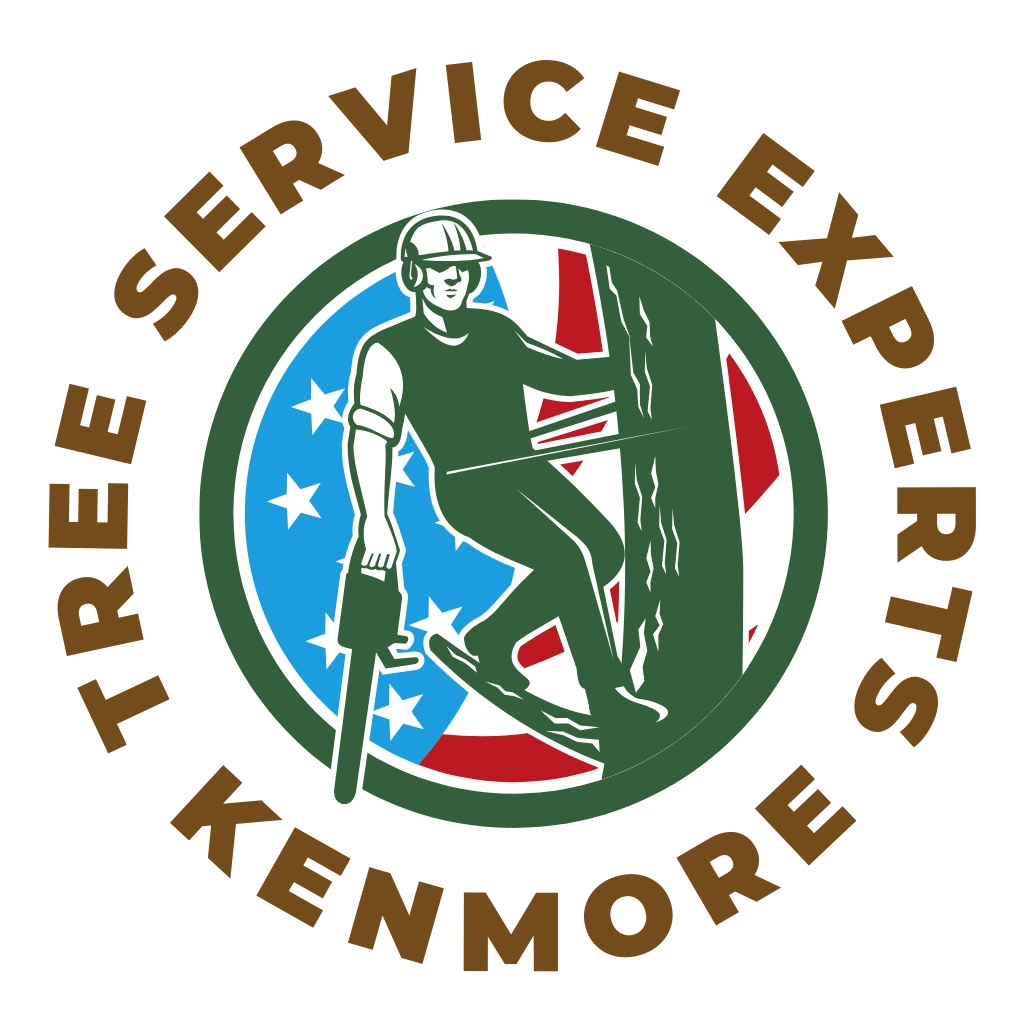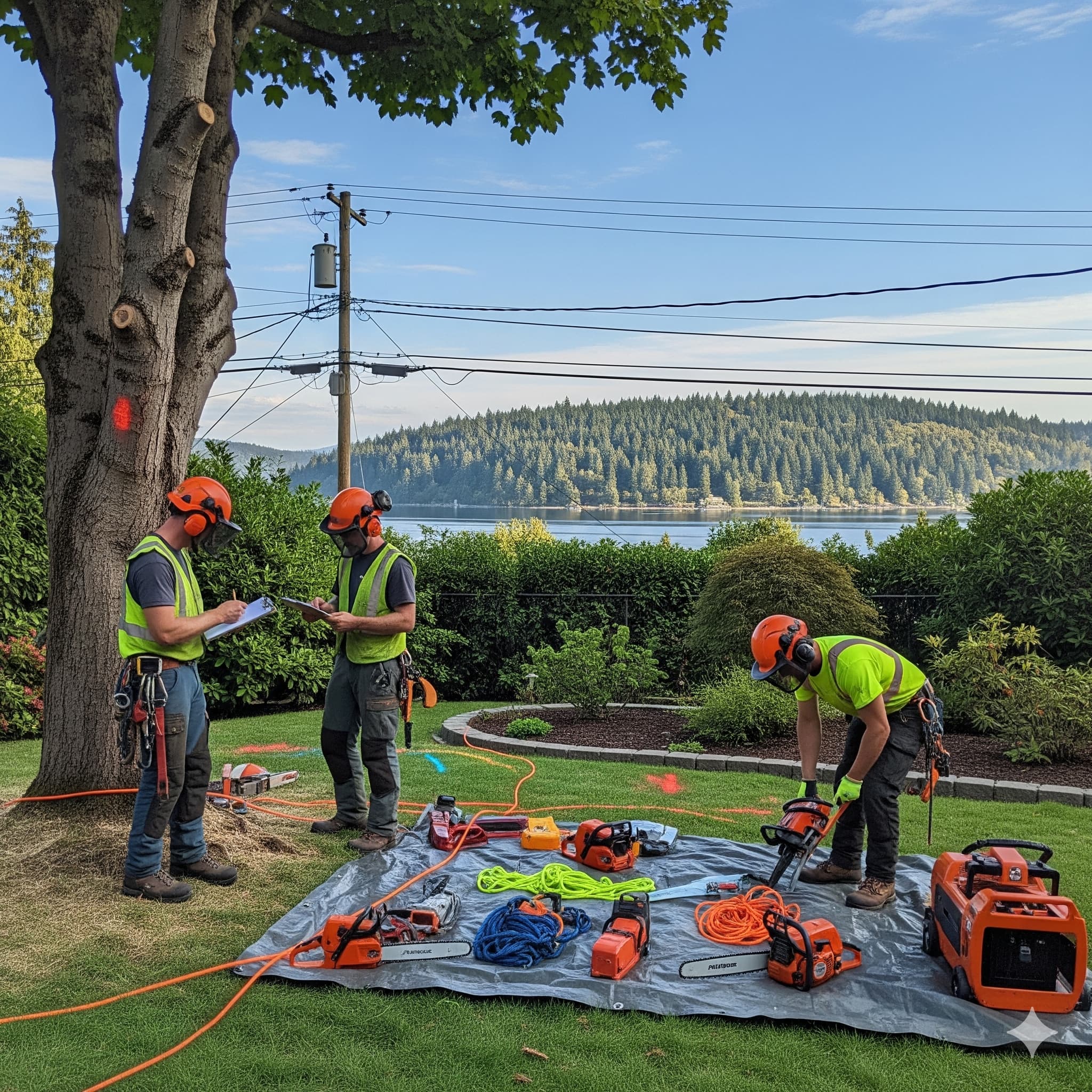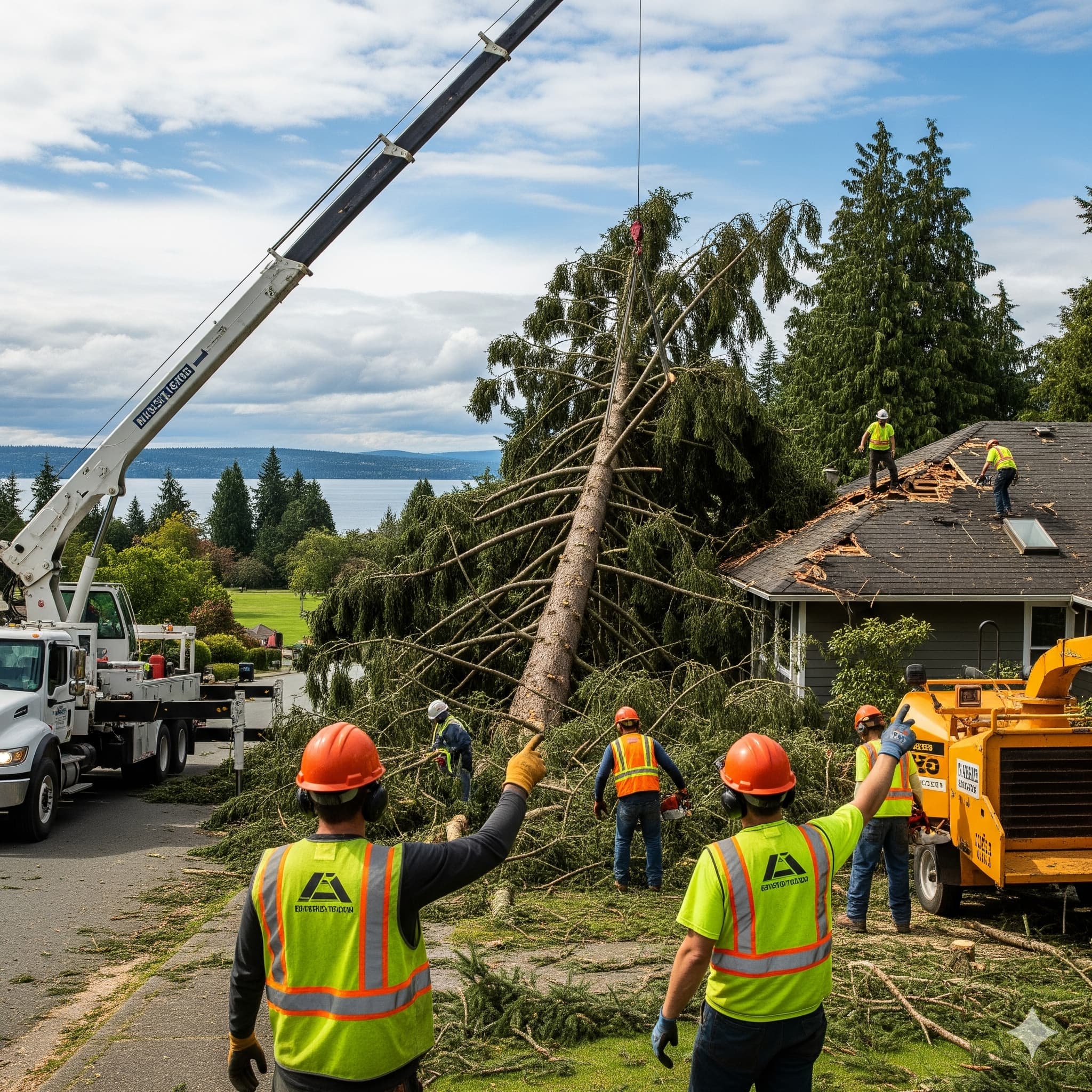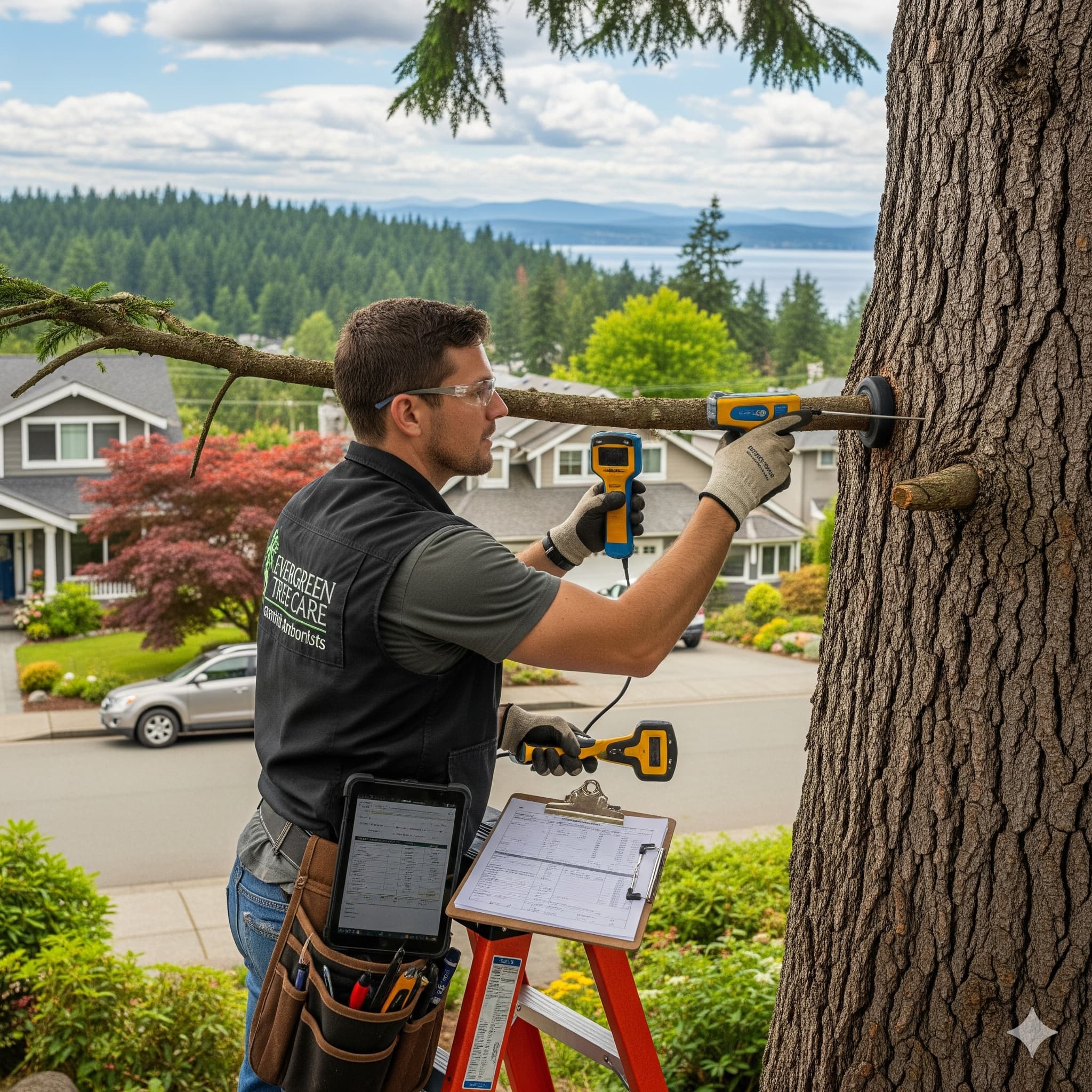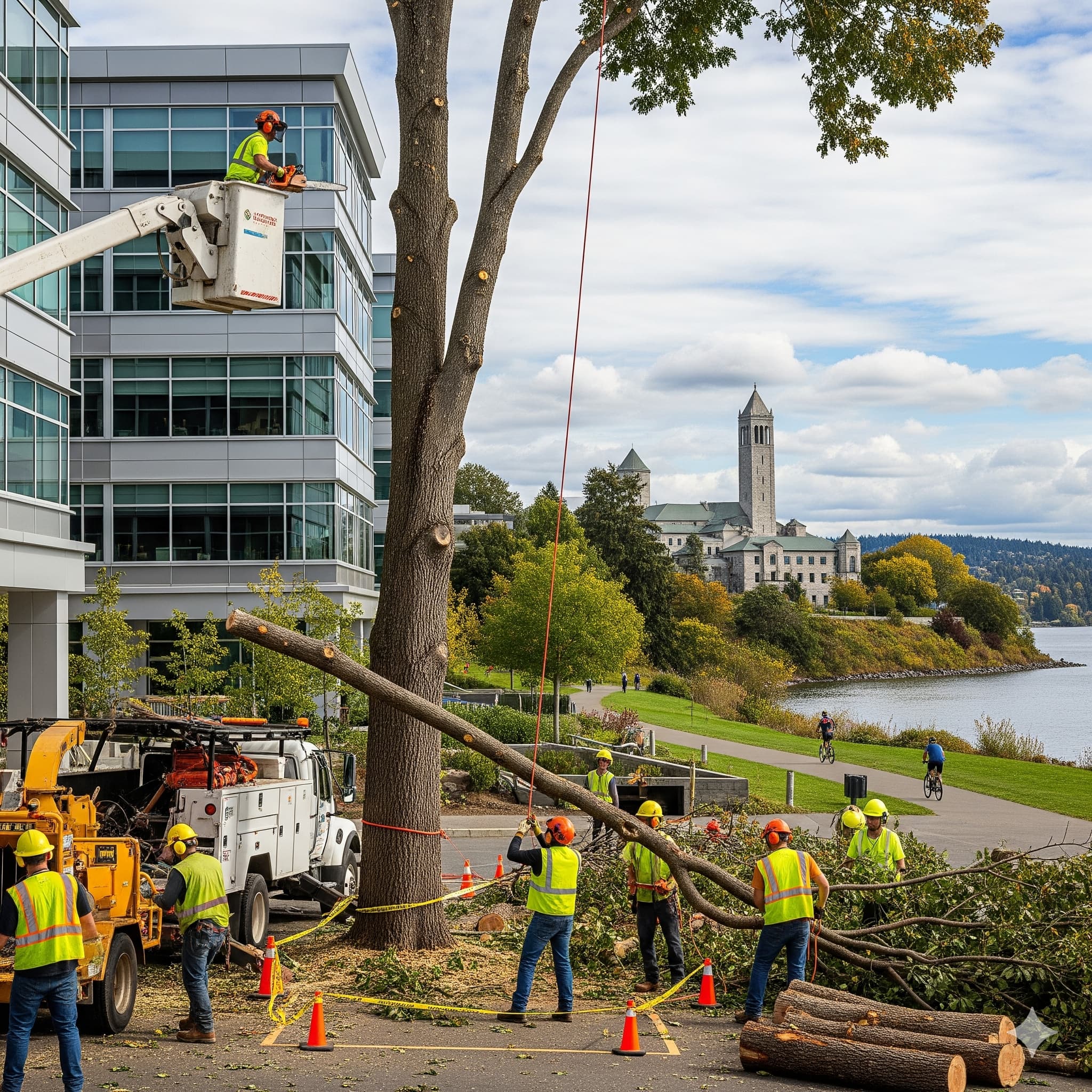
Kenmore Commercial Tree Removal: FAQs
Commercial Tree Removal Kenmore
Commercial property managers, business owners, and municipal officials in Kenmore frequently have questions about professional commercial tree removal services. From office complexes near Bastyr University to retail developments along the Burke-Gilman Trail, understanding the complexities of commercial tree removal helps ensure safe, compliant, and cost-effective solutions.
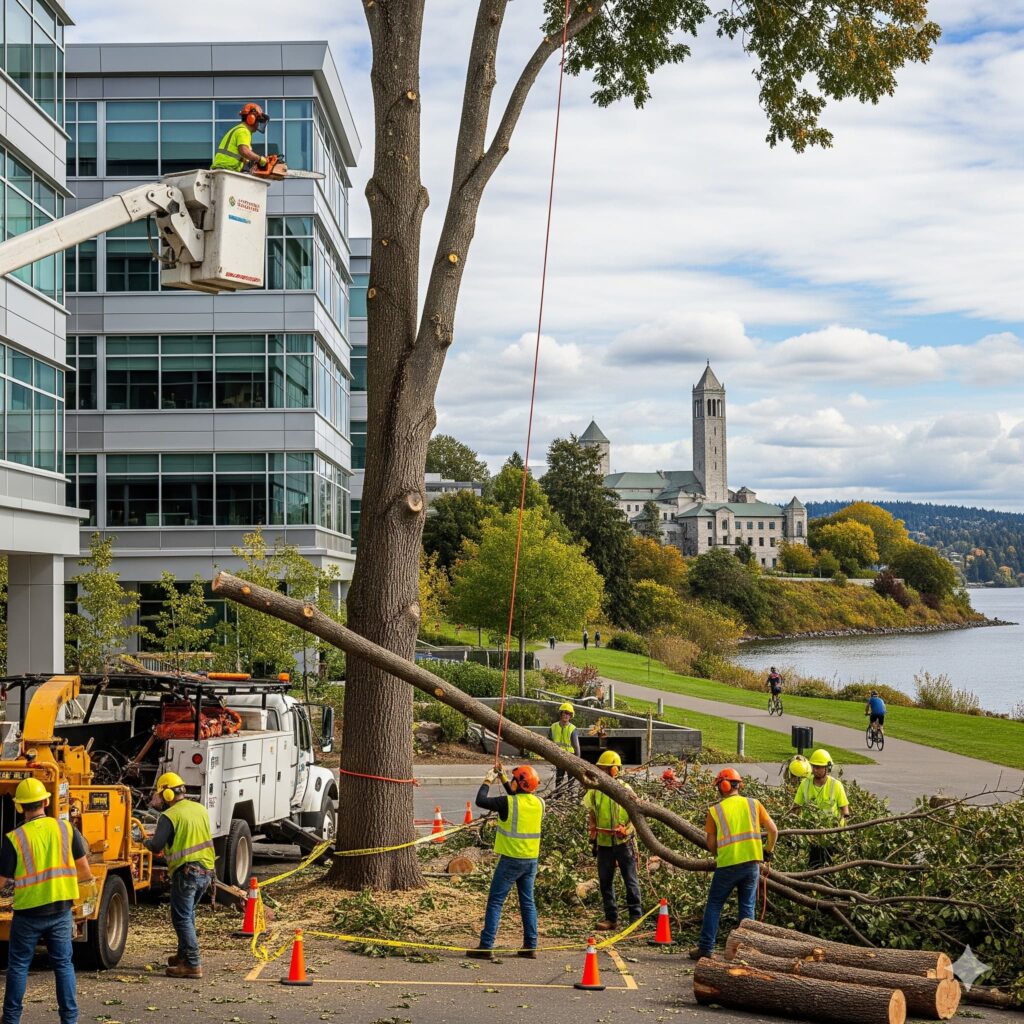
What Makes Commercial Tree Removal Different?
Commercial tree removal involves unique challenges that distinguish it from residential services, requiring specialized expertise and equipment to address complex business property needs.
Q: How does commercial tree removal differ from residential services?
Commercial tree removal typically involves larger-scale projects with multiple trees, complex site access, coordination with business operations, and stricter safety protocols. Properties near Saint Edward State Park or along busy commercial corridors require specialized planning to minimize business disruption while ensuring public safety.
Q: What types of commercial properties require tree removal services?
Office buildings, retail centers, industrial facilities, apartment complexes, schools, hospitals, and municipal properties throughout Kenmore all require professional commercial tree removal. Each property type presents unique challenges regarding access, liability, and operational considerations.
Regulatory and Permit Requirements
Kenmore’s municipal regulations significantly impact commercial tree removal projects, requiring professional expertise to ensure compliance.
Q: What permits are required for commercial tree removal in Kenmore?
Most commercial tree removal projects require permits from the City of Kenmore, with fees starting at $52.50 per tree. Properties must comply with exceptional tree protections and may face additional requirements for trees in critical areas or near environmental buffers. Professional services handle permit applications to ensure compliance.
Q: How does Kenmore’s Exceptional Tree Ordinance affect commercial properties?
The ordinance protects large Douglas Firs, Western Hemlocks, and Western Red Cedars throughout commercial properties. Removal of exceptional trees requires special permits and often includes mitigation requirements such as replacement plantings or payments into the city’s tree fund.
Q: What are the penalties for unpermitted tree removal?
Violations can result in fines up to $94,000, as demonstrated by a 2023 case involving a developer. Commercial properties face additional scrutiny due to their visibility and impact on community forest resources.
Safety and Liability Considerations
Commercial tree removal involves complex safety and liability issues that require professional expertise and comprehensive insurance coverage.
Q: Who is liable if tree removal causes property damage?
Professional commercial tree removal companies carry comprehensive liability insurance specifically covering tree work damage. Property owners should verify that contractors maintain current certificates of insurance before beginning any work to protect against potential claims.
Q: What safety protocols are required for commercial tree removal?
Commercial projects require certified arborists, OSHA-compliant safety procedures, proper equipment, and coordination with local emergency services. Projects near high-traffic areas like Log Boom Park or the Sammamish River corridor demand enhanced safety measures.
Q: How are pedestrians and employees protected during removal operations?
Professional services establish safety perimeters, post warning signs, coordinate with property management to notify occupants, and often schedule work during off-hours to minimize public exposure. Large projects may require temporary access restrictions.
Project Planning and Timeline
Successful commercial tree removal requires comprehensive planning that considers business operations, regulatory requirements, and logistical challenges.
Q: How long does commercial tree removal take?
Project duration varies significantly based on tree size, quantity, access challenges, and permit requirements. Single tree removal may take one day, while large-scale projects can require several weeks. Professional assessment provides accurate timeline estimates.
Q: Can tree removal be scheduled to minimize business disruption?
Professional services coordinate with property managers to schedule work during off-peak hours, weekends, or business closures when possible. Emergencies may require immediate response regardless of business hours.
Q: What planning is required before tree removal begins?
Comprehensive planning includes permit acquisition, utility line identification, access route planning, debris disposal coordination, and employee/tenant notification. Properties near Wallace Swamp Creek may require additional environmental considerations.
Cost Factors and Budgeting
Commercial tree removal costs vary significantly based on multiple factors that a professional assessment can accurately evaluate.
Q: What factors affect commercial tree removal costs?
Tree size, quantity, species, location, access challenges, permit requirements, disposal needs, and timing all impact project costs. Emergency removals typically cost more than planned projects. Professional estimates provide detailed cost breakdowns.
Q: Are there ways to reduce commercial tree removal costs?
Combining multiple trees into a single project, scheduling during off-peak seasons, and choosing cost-effective disposal options can reduce expenses. Preventive maintenance often costs less than emergency removal following tree failure.
Q: How should businesses budget for tree removal?
Annual tree assessments help identify potential removal needs, allowing budget planning. Emergency funds should account for unexpected tree failures, particularly for properties with mature trees near structures.
Insurance and Risk Management
Commercial tree removal intersects with insurance coverage and risk management strategies that protect business interests.
Q: Does commercial insurance cover tree removal?
Coverage varies by policy and circumstances. Insurance typically covers removal when trees damage structures, but may not cover preventive removal. Property owners should consult insurance providers about specific coverage details.
Q: How does tree removal affect property insurance rates?
Removing hazardous trees may reduce liability risks and potentially lower insurance premiums. Conversely, inadequate tree maintenance could increase rates if insurers perceive elevated risk from unmaintained trees.
Environmental and Community Considerations
Kenmore’s environmental stewardship priorities influence commercial tree removal decisions and requirements.
Q: How does tree removal impact Kenmore’s urban forest goals?
The city prioritizes tree retention and requires mitigation for removed trees through replacement plantings or tree fund contributions. Commercial properties must balance development needs with community forest preservation goals.
Q: Are there alternatives to tree removal for commercial properties?
Professional assessment may identify alternatives, including selective pruning, cabling and bracing, root management, or soil improvements that address concerns without removal. These options often provide cost-effective solutions while preserving valuable trees.
Q: What happens to the removed tree material?
Professional services offer various disposal options, including mulching, firewood processing, or specialized disposal for diseased material. Sustainable practices align with Kenmore’s environmental stewardship priorities.
Emergency Response Services
Commercial properties require rapid response capabilities for storm damage and emergency tree situations.
Q: What constitutes a tree emergency for commercial properties?
Trees threatening structures, blocking emergency access, contacting power lines, or creating immediate injury risks require emergency response. Properties near Moorlands Park or other high-traffic areas face elevated emergency risks.
Q: How quickly can emergency tree removal begin?
Professional services maintain 24-hour emergency response capabilities, with crews typically arriving within hours of notification. Response time may vary based on weather conditions and crew availability during major storm events.
Choosing Professional Services
Selecting qualified commercial tree removal contractors ensures successful project outcomes while protecting business interests.
Q: What qualifications should commercial tree removal contractors have?
Look for ISA-certified arborists, comprehensive insurance coverage, TCIA accreditation, local experience, and established safety records. Contractors should understand Kenmore’s regulations and environmental priorities.
Q: How should businesses evaluate tree removal proposals?
Compare contractor qualifications, insurance coverage, detailed cost breakdowns, timeline estimates, and references from similar commercial projects. The lowest bid may not provide the best value for complex commercial work.
Professional Partnership Benefits
Tree Service Experts Kenmore provides comprehensive commercial tree removal services that address the unique challenges facing business properties throughout the community. Our certified arborists understand Kenmore’s regulations, environmental priorities, and business needs.
Whether managing office complexes near Rhododendron Park, retail centers, or industrial facilities, professional commercial tree removal services protect property values while ensuring compliance with local regulations and community forest stewardship goals. Understanding these frequently asked questions helps business owners make informed decisions that support both operational needs and Kenmore’s environmental commitment.
